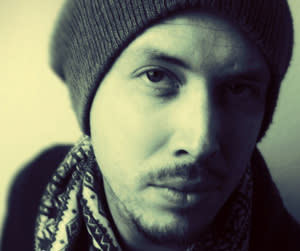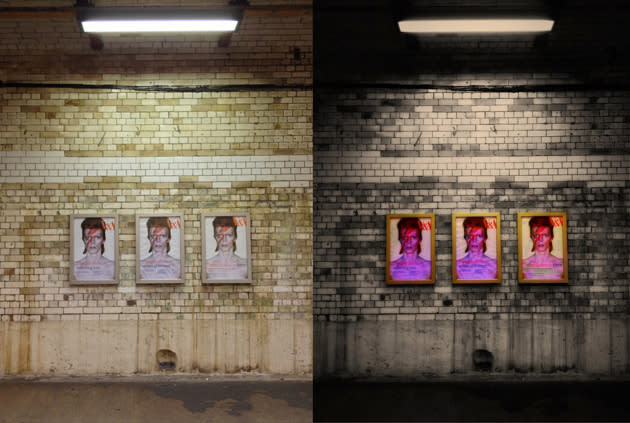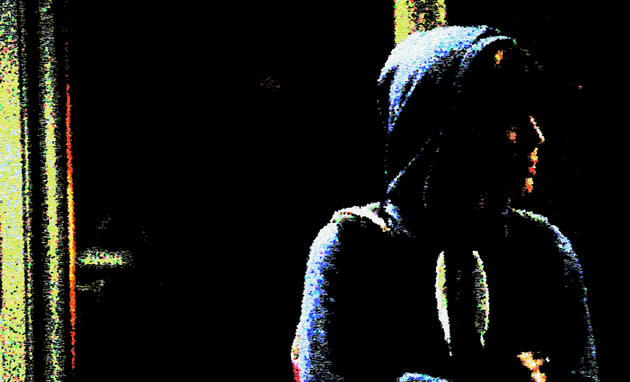A guide to street photography: Gavin Harrison's smartphone art

Street photography is the purest, most spontaneous way to create art with a camera. No studios, no props, no poses; all you need is the right equipment and a street with people on it. In this original series for Engadget, we'll follow three seasoned street fighters and try to glean some practical wisdom about what engages their eyes, brains and fingers in the moments before they shoot.
The third and final street photographer in this trilogy represents a very different (and non-deferential) way of doing things. As you're about to see, Gavin Harrison doesn't stick to traditional ideas of what a street shot should look like, or to what sort of camera should be used to capture it. In fact, he spends more time thinking about smartphone apps than about lenses or exposure settings, and there's a lot he can teach us.
The photographer

Whereas Antonio Olmos and Matt Stuart are steadfast purists, Harrison's pictures are heavily reliant on the use of filters. And we're not just talking about a bit of sepia or desaturation: Harrison often uses effects that totally distort the original image, to the point where any journalistic aspect is lost.
Some might argue that Harrison isn't even a street photographer, and that his work is divorced from reality, but if you put this idea to him, you'll get a pretty defiant response:

"My photos are highly edited, but that just heightens the realism of the photograph. I want people to stop and look at something, so I take a photo of it and then I make it so that they notice it."
And it works. Whatever Harrison is doing to his photographs (which is almost everything that can be done to a photograph), it's proving itself profitable. He's making sales and he's increasingly able to live off his work even while he moonlights as an actor.
The gear

Harrison does all his street photography on an iPhone 4. It so happens that the other two photographers in this series also used iPhones. Olmos used his as a backup camera for occasional shots, while Stuart tended to use his mainly for apps that helped him to predict and measure the correct exposure during the course of a day. Neither of these guys used an iPhone as their primary camera, however.
"I got an iPhone 4 two and half years ago," Harrison says. "Before then, I used a Nokia N95 and it was fantastic, but the iPhone was a lot quicker. It gave me my images when I wanted to take them."
The iPhone 4 was arguably the first smartphone that delivered great still and video output without compromising on speed and ease of use, and hence it gained a strong following among Brits working in various parts of the media industry. Even though the iPhone has perhaps been overtaken by phones that put a bigger emphasis on photography, like Nokia's optically stabilized, 41-megapixel Lumia 1020, the iPhone remains entrenched among creative types living and working in London.
Then again, while Harrison might regard the iPhone as fast compared to other phones, it's worth pointing out that it's not nearly as speedy as Olmos' Canon 5D Mark II or Stuart's Leica MP. In fact, Harrison tends to be a lot slower than either of those guys, taking around 10 to 15 seconds on each shot instead of just a couple of seconds.
"The overall process may well end up being more spontaneous than using a traditional camera and a laptop."
This certainly isn't intended as a criticism; it's just evidence that he works in a way that is better suited to "iPhoneography." Part of the reason he takes longer is that he often tries to frame a shot in anticipation of a specific filter being applied later -- and sometimes he even experiments with filters while in the same location so he can re-frame the shot if necessary. Once he's happy, he uses his phone to share a shot immediately to Twitter and his blog. Once you factor in the time saved by doing this directly on a phone, the overall process may well end up being more spontaneous than using a traditional camera and a laptop.
The technique

Check out the video near the top of this page, showing Harrison in action. He's fun to observe, simply because of the fluency with which he uses different bits of mobile software to both take and edit photos. He's spent so much time with his favorite suite of tools that he's able to envisage the whole creative process even before he hits the shutter button. The smartphone's touch interface works with the instant previewing to permit rapid trial and error, so ultimately Harrison is able to seize on whatever looks "right."
"I think apps are really helpful in taking a shot that you wouldn't normally take if you didn't know the apps ... You're seeing something with a different eye than if you just had your camera with you, and if you were going to use Adobe Lightroom back at home."
There's a school of thought that holds visual effects to be cheesy, or worse, dishonest. It says that edits in a documentary film should be straight cuts rather than dissolves; that any sort of manipulation of a "real" image is essentially fakery.
"I think apps are really helpful in taking a shot that you wouldn't normally take if you didn't know the apps..."
Conversely, you could argue that glass lenses have always distorted reality to some degree, whether by bending straight lines or vignetting or reducing depth of field, and photographers have exploited this to deliver images with greater impact. The same argument applies to celluloid film, which has also been used for creative distortion, to add noise or remove color or just generally perceive things differently from the way our eyes do, so that an image can be lifted above the mundane. Harrison is just taking this same notion one step further, into the digital realm.
If you want to try out any of the techniques he uses, here's a rundown of his regular staple of apps:
645 PRO MK II, $3.99 -- "It has a built-in light meter and does manual settings like a DSLR." (Camera FV-5 offers something a bit like this on Android.)
Slow Shutter Cam, $0.99 -- "It keeps the shutter open for blurred motion. It works best with a tripod unless you want really weird-looking photos."
DMD Panorama, $1.99 -- "Great panorama app, which can do 360 degrees if you want." (Pano is similar on Android.)
Clone Camera Pro, $1.99 -- "A fun app for cloning yourself or your friends in certain photos."
Big Lens, $0.99 -- "For mimicking depth of field, so you can blur out the background or different objects in the scene."
Camera+, $1.99 -- "Especially good for its burst mode, so you can fire off a bunch of photos in quick succession." (Camera ZOOM FX offers advanced burst mode on Android.)
Snapseed, free -- "One of my main editing apps. Great for any type of photo, because it does so many different things." (Also available at Google Play.)
VSCO Cam, free -- "Especially good for adding an aged, washed-out look to your images." (Or see Vignette on Android.)
TinyWorld, $0.99 -- "Makes scenes look like planets... gives a sense of abstract realism." (Check out Tiny Planet FX Pro for similar effects on Android, priced at $2.99.)
Wrap-up

So, we come to the end of our time not just with Harrison, but with a trio of photographers who all bring something different to the table. If there's one major conclusion to take away from all this, it's that street photography is a skill that can be learned and improved, through the manual exposure and focusing techniques employed by Olmos and Stuart, and by making sure you always have some sort of camera at hand, as Harrison does.
"Street photography is more than just photography on the street."
But it's equally true to say that street photography is impossible to master. Ultimately, it's about being ready for that random event that could strike at any moment. You can't prepare for this -- all you can do is prepare to be prepared. If you have the right techniques and sufficient practice, you merely increase the probability that you'll snatch a perfect shot before the moment disappears forever.
A guide to street photography
And here's something else that's certain: Street photography is more than just photography on the street. It doesn't consist of photos you could have taken on your way home from the office. To maximize the chances of getting a good shot, you have to allocate time to it; you have to walk miles with no destination; you have to have the undying optimism of a gambler; and you have to overcome taboos about photographing strangers. You also have to be so comfortable with your camera that it almost vanishes from the equation and, perhaps most importantly, you need to shoot hundreds if not thousands of embarrassing duds before you strike gold.
Visit Harrison's blog, Dodgedabulletpoint, to see more of his artwork. And, if you haven't already, feel free to take a look at the first two parts of this series, which looked at the work of Antonio Olmos and Matt Stuart.


















